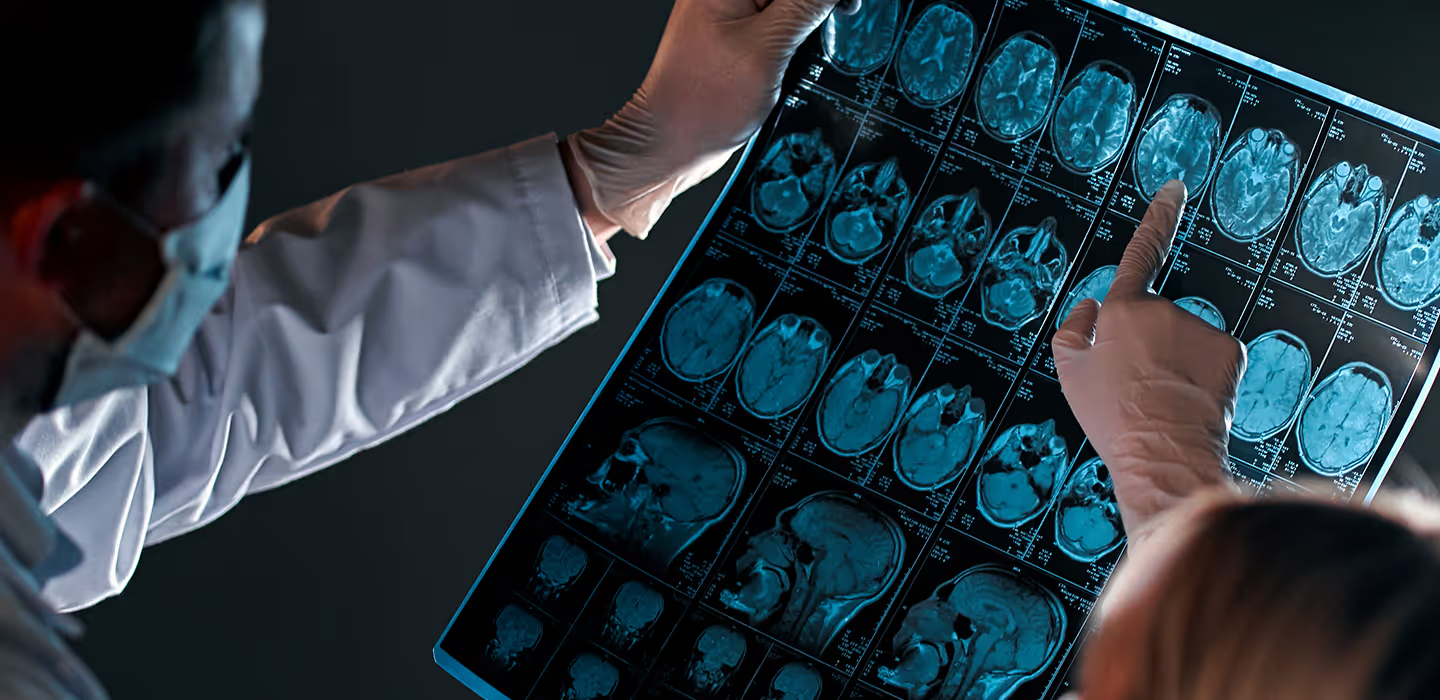Tout savoir sur la sclérose en plaques

Neuroprotection and remyelination: hopes and realities
There are possibilities for remyelination even in an adult human brain, and we know that certain lesions can be remyelinated in forms with relapse and remission thanks to Oligodendrocyte Precursor Cells (OPCs). These precursor cells can develop into mature oligodendrocytes which form the myelin sheath in the demyelinated nerve fibre. The new sheath will generally be thinner than the initial one, and may also be subject to a new immune attack in the event of recurrent relapses. Anatomically, remyelinated plaques are more blurred in their contours and are known as "shadow plaques". However, this process is only partial, and becomes insufficient as the disease progresses and multiple lesions appear.
Effective remyelination therefore requires oligodendrocyte precursor cells, stimuli that transform these cells into mature oligodendrocytes, and nerve fibres that remain intact after the destruction of their sheaths. This is a crucial element since some of these nerve fibres can be transected and others can degenerate slowly over time having lost their protective sheath. The problem of remyelination is therefore directly linked to that of preservation of nerve fibres, i.e. neuroprotection of these fibres both at the time of active inflammation and more chronically during a process of secondary degeneration. Conversely, the best neuroprotection for nerve fibres is their early remyelination.
The difficulties encountered are therefore manifold. Firstly, remyelination is very difficult to measure clinically and the usual MRI techniques have insufficient specificity to demonstrate remyelination. Secondly, the ability of myelin to regenerate varies very greatly from one person with MS to another while these possibilities are better known and more predictable in rodents, for example. Lastly, the ability to remyelinate diminishes with age, and the longer we live, the weaker our ability to remyelinate becomes.
There are also inhibitory factors for remyelination at plaque level. Some of these factors may be lipids released by the destruction of the myelin sheath, in particular cholesterol crystals . The cells responsible for eliminating these lipids may also inhibit myelin reconstruction. The process of scarring by hypertrophy of the cells called astrocytes results in a fibrous scar that can mechanically oppose the reconstruction of the myelin sheath. Numerous studies are underway using new molecules to analyse the remyelination process. These studies are carried out on cell cultures or rodents and will take a long time to be transposed to the adult human brain.
Two phase 2 studies have been carried out in MS-induced optic neuritis, one with an antibody blocking a protein that inhibits oligodendrocyte maturation (opicinumab), the other with an anti-allergy drug (clemastine). Partially positive results have been observed, but never to the point of significantly improving the visual acuity of patients receiving the active product. Opicinumab proved ineffective in another study of secondary progressive forms, and clemastine could even worsen the progression of MS in some patients...
Ibudilast is an oral medication with multiple sites of action, in particular the ability to reduce macrophage migration, prevent the release of pro-inflammatory molecules, and promote axon growth and remyelination in brain cell cultures. It was tested in a phase 2 trial (SPRINT - MS; 255 patients) including patients with secondary progressive disease or primary progressive disease, compared with placebo. It significantly reduced the degree of cerebral atrophy (by around 50%), but had no effect on active inflammation. A phase 3 study would therefore be desirable to confirm these initial results, but the gastrointestinal side effects (diarrhoea, nausea, vomiting, abdominal pain) are quite significant.
Simvastatin (a well-known cholesterol-lowering agent) also has anti-inflammatory and antioxidant properties. An initial phase 2 study (MS-STAT, 140 patients with secondary progressive form) showed a 43% reduction in the mean of cerebral atrophy and an improvement in quality of life. The product has no influence on the frequency of relapses or the appearance of new lesions. A more extensive phase 3 study (MS-STAT2) is currently underway.
Alpha-lipoic acid is an antioxidant produced by the body itself, capable of crossing the barrier between the blood and the brain and could therefore have immunomodulatory and neuroprotective effects within the CNS. A phase 2 study in progressive forms is currently underway (LAPMS or Lipoic Acid for Progressive MS).
Masitinib is an inhibitor of a tyrosine kinase different from Bruton's, located in macrophages and cerebral microglia but not in B lymphocytes. It therefore acts only on innate immunity. Inhibiting this enzyme limits activation and the pro-inflammatory response. A phase 3 study, published in 2022, was carried out in patients with primary progressive or secondary progressive MS who had been relapse-free for 2 years, compared with a placebo. At a dose of 4.5 mg/kg (taken orally), the EDSS disability scale was significantly slowed. A new study to confirm these results, this time using repeated MRI scans, is currently underway.
Metformin is an oral medication widely used in the treatment of type 2 diabetes. In mice, it has anti-inflammatory activity and reduces the severity of experimental autoimmune encephalitis. In cell cultures, it has remyelinating and neuroprotective effects. A study of this medication in progressive forms of MS is currently underway in Flanders (MACSiMiSE-BRAIN Project), with Metformin (or its placebo) being used as an add-on to standard basic treatment.
However, these clinical trials, with results that are sometimes promising and sometimes disappointing, open up new prospects for the future treatment of MS. There will undoubtedly be a need to combine several medications, some to block the inflammatory autoimmune reaction outside and inside the CNS, others to prevent neurodegeneration and promote remyelination.
Stay informed
Receive all the information related to research and news from the Belgian Charcot Foundation directly in your inbox.















